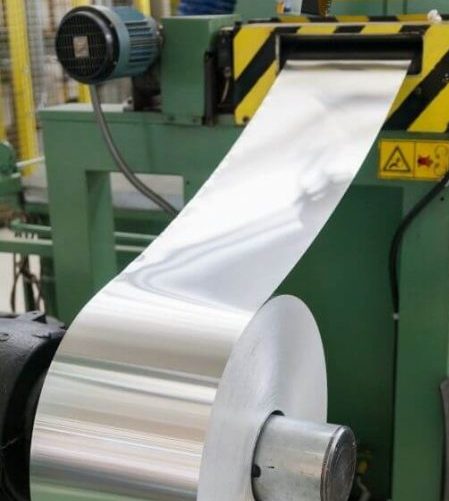Metal Stamping: Everything You Required to Find Out About the Process
Metal Stamping: Everything You Required to Find Out About the Process
Blog Article
Steel Stamping Advancements: Elevating Production Processes for Superior Outcomes
In the realm of manufacturing procedures, metal stamping has actually long been a foundation strategy for creating a selection of precision parts. With the unrelenting march of technical improvement, the landscape of metal marking is undertaking a significant transformation.
Evolution of Metal Stamping Strategies

Additionally, developments in product science have led to the advancement of high-strength alloys that can now be perfectly stamped right into detailed forms, satisfying a more comprehensive array of commercial applications. The assimilation of robotics and expert system has even more maximized the marking process by enhancing speed and precision while decreasing the risk of human mistake.

Effect of Advanced Products
Have innovative materials transformed metal stamping procedures substantially in the manufacturing sector? The solution is a definite yes (Metal Stamping). The integration of sophisticated products has actually transformed steel marking, making it possible for suppliers to accomplish higher precision, enhanced effectiveness, and improved item quality. By making use of materials such as high-strength alloys, advanced composites, and ingenious coatings, metal marking processes can now produce elements that are lighter, stronger, and much more long lasting than ever in the past.
These innovative materials offer premium mechanical buildings, deterioration resistance, and thermal security, allowing suppliers to meet the needs of modern-day sectors such as aerospace, automobile, and electronic devices. Additionally, using advanced products in metal stamping has facilitated the production of complex geometries and detailed styles that were formerly unattainable through traditional techniques.
Furthermore, the implementation of advanced products has actually brought about minimized material waste, lower manufacturing expenses, and shorter preparations, making steel marking procedures much more lasting and cost-effective. As innovation remains to advancement, the effect of sophisticated products on metal marking processes is anticipated to drive additional technology and boost the competition of producers in the worldwide market.
Automation in Metal Stamping
The development of steel marking procedures driven by the combination of advanced materials has actually set the phase for significant advancements in automation within the production market. Automation in steel marking has actually transformed manufacturing processes, boosting performance, accuracy, and total output high quality. Via the use of robotics, sensing units, and computer-controlled systems, tasks that were once manual and time-consuming can currently be performed with exceptional rate and precision.
Automation in metal marking not just speeds up production rates but likewise makes sure consistency in the manufacturing process. By decreasing human treatment, the risk of errors is substantially lowered, resulting in greater Check Out Your URL levels of product harmony and integrity. In addition, automation enables suppliers to carry out intricate stamping jobs that would certainly be impractical or tough to achieve by hand.
Moreover, automation in metal stamping adds to a much safer working setting by minimizing the requirement for employees to take part in harmful or repetitive jobs - Metal Stamping. This shift in the direction of automation not only enhances productivity however additionally leads the way for the future of production, where technology plays a main role in driving operational quality
High Quality Control and Assessment Equipments
With a concentrate on accuracy and integrity, quality control and evaluation systems play a crucial function in official site making certain product quality in steel marking procedures. These systems are designed to keep an eye on every phase of production, from material evaluation to the end product, to ensure that all components fulfill the required requirements. By executing innovative innovations such as optical examination systems, coordinate determining equipments (CMM), and automated determining tools, suppliers can discover even the tiniest inconsistencies in measurements, surface quality, and total stability of stamped parts.

Sustainability Practices in Metal Stamping
Building upon the structure of precision and dependability established through top quality control and examination systems, the integration of sustainable techniques in metal stamping procedures is significantly becoming a focal factor for suppliers seeking to decrease environmental influence and maximize source utilization. Sustainability methods in steel marking include a series of campaigns intended at decreasing waste generation, energy consumption, and greenhouse gas emissions throughout the production procedure.
One secret facet of sustainability in steel stamping is the fostering of environmentally friendly materials and modern technologies that promote recyclability and waste decrease. By utilizing recycled products and applying energy-efficient equipment, producers can lower their carbon footprint and add to a more sustainable manufacturing cycle. Additionally, enhancing production procedures to lessen product waste and power use not only benefits the setting but likewise brings about cost savings for businesses over time.
In addition, the application of sustainable practices in steel stamping can boost brand name reputation and charm to eco mindful consumers. As sustainability remains to get relevance in the this page manufacturing sector, integrating environmentally friendly efforts into metal marking processes is essential for long-lasting success and competition in the market.
Final Thought
To conclude, steel stamping strategies have substantially developed over time, incorporating innovative materials and automation to improve manufacturing processes. Quality assurance and evaluation systems play a crucial function in making sure exceptional results, while sustainability practices are progressively being executed to reduce environmental impact. These technologies in steel marking have changed the industry, leading to extra effective and lasting production approaches for different sectors.
Steel marking, as soon as a handbook and labor-intensive process, has actually changed into a highly automated and advanced approach of shaping steel sheets into numerous forms and designs.Have advanced products changed metal stamping processes substantially in the production industry? By making use of materials such as high-strength alloys, advanced composites, and cutting-edge finishings, metal stamping processes can now generate components that are lighter, stronger, and more sturdy than ever before.
The development of steel marking processes driven by the combination of sophisticated materials has established the phase for considerable improvements in automation within the production industry.In final thought, metal marking methods have actually considerably advanced over time, incorporating innovative materials and automation to improve manufacturing procedures.
Report this page